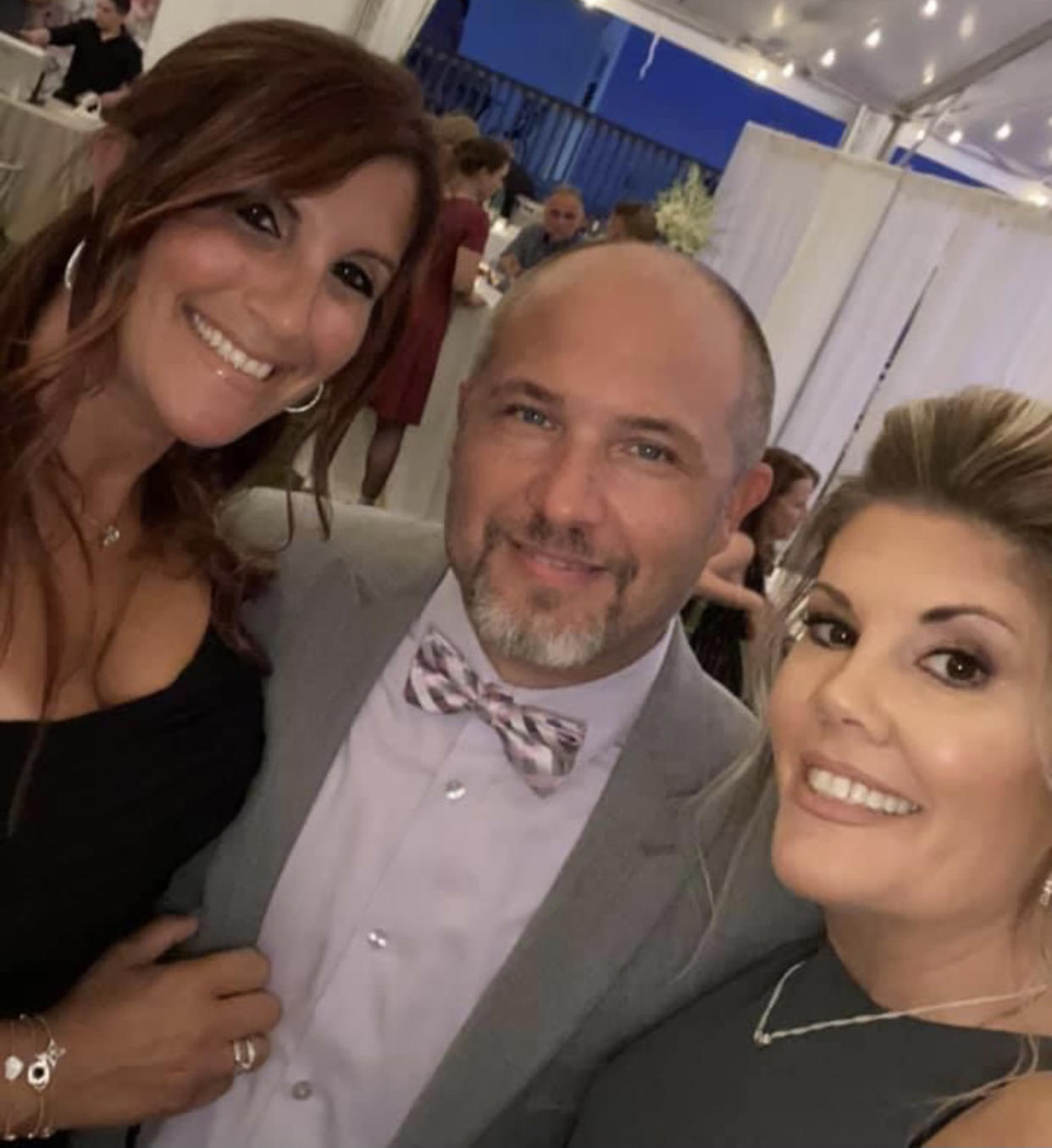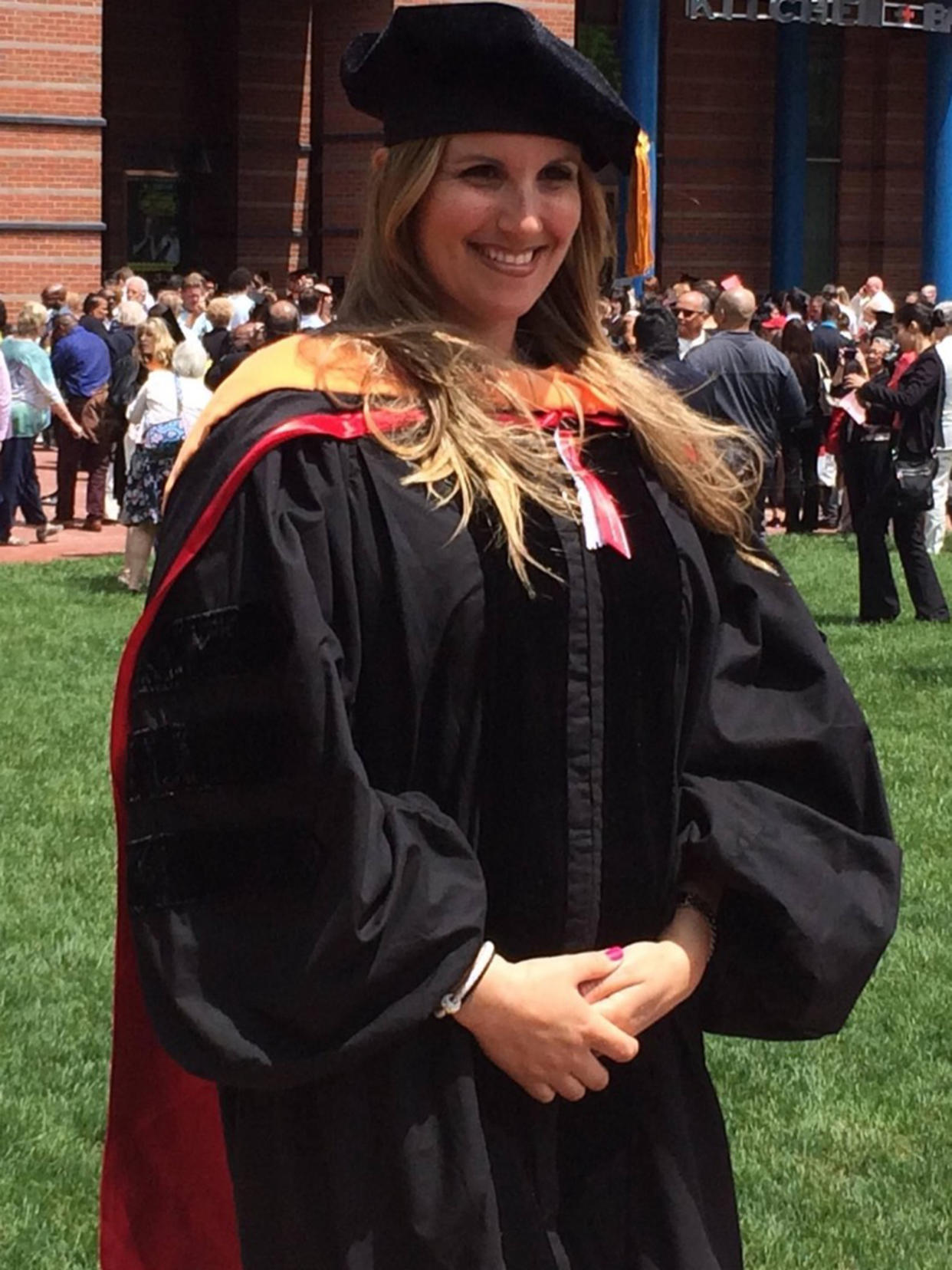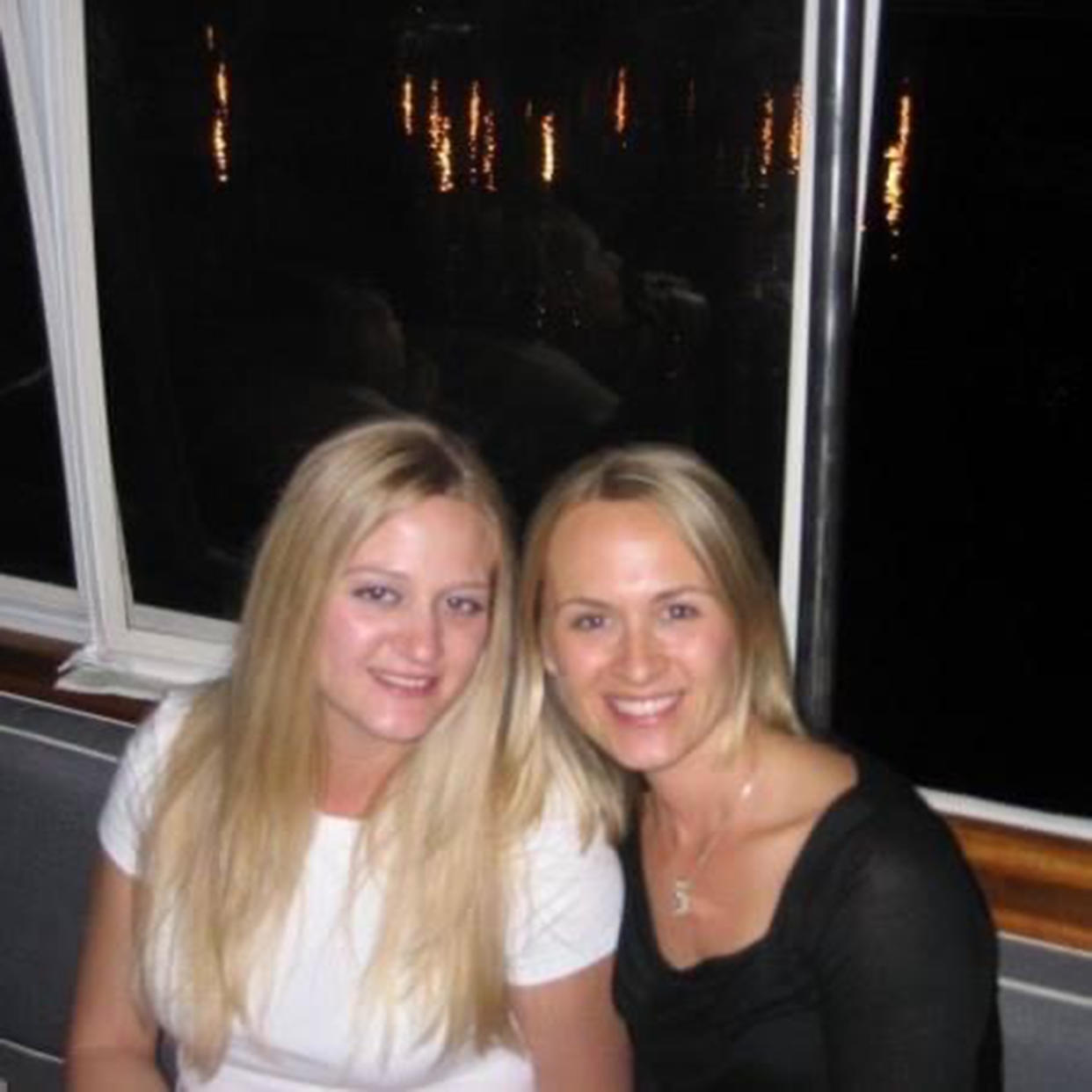107 cases of brain tumors lead to investigation at NJ high school: 2 men share their stories
In 1999, Al Lupiano says he was diagnosed with an acoustic neuroma, a type of benign brain tumor that grows on a nerve that runs from the brain to the inner ear. He was successfully treated for it, though he has lingering side effects, including slight deafness, fatigue and dizziness. Last year, his wife, Michele Lupiano, was diagnosed with an acoustic neuroma and his sister, Angela DeCillis, was diagnosed with a glioblastoma, an aggressive brain tumor. As DeCillis’ health declined, Al Lupiano started wondering why the three of them had brain tumors.
“We had talked about it from day one, that there’s something wrong here, and because of my sister’s background in medicine, she had said the same thing: ‘You need to figure this out. You have to find out what’s doing this. You have to find out if it’s something that’s going to affect my kids,’” Al Lupiano, 50, of Jamesburg, New Jersey, told TODAY. “I was highly motivated to keep moving forward.”
Brain tumor diagnosis within weeks
DeCillis started showing stroke-like symptoms and went to the hospital in August 2021. A scan revealed that she had a tumor on the left side of the brain that was 30 millimeters. Doctors thought it was benign at first, but the pathology results indicated otherwise, Al Lupiano recalled.
“It turned out that it was not benign, but it was a malignant glioblastoma, a very very aggressive cancer,” he explained.

Around the same time, Michele Lupiano was experiencing some hearing loss and balance problems. When DeCillis started having symptoms, Michele Lupiano made an appointment for an MRI.
“It hit home with my wife that (she) needed to see a doctor and see what’s going on,” Al Lupiano said. “Hers was positive for an acoustic neuroma, also on the left side, also 30 millimeters, exactly the same as I had. We had three of us by that date knowing we had brain tumors.”
A week later, the Lupianos were at a doctor’s appointment and mentioned Al Lupiano’s acoustic neuroma 20 years earlier.
“(The doctor) just looked at me and said, ‘I’ve been doing this a long time. I don’t know if I have ever had another husband and wife who have an acoustic neuroma. It’s just extremely rare. It’s just like both of you being struck by lightning,’” Al Lupiano recalled.
When Al Lupiano then revealed that his sister had glioblastoma, the doctor began peppering him with questions about what the three had in common, he recalled.
“We kept saying, ‘Well, we grew up in the same township,’” Al Lupiano said. “Other than that, we don’t have any experience to link us together.”

That conversation inspired Al Lupiano to do some research. He investigated whether other people who grew up nearby had experienced brain tumors, too. But he narrowed his search criteria: He wanted to look for primary brain tumors, those that originate in the brain instead of resulting from another cancer, such as lung or breast cancer. As his sister’s health worsened, he said found 15 people who went to his high school, Colonia High School in Woodbridge Township, New Jersey, who also had primary brain tumors.
“She was declining quickly, and my attention was elsewhere,” Al Lupiano said.
By Thanksgiving, DeCillis' cognitive abilities deteriorated.
“She really started going downhill,” Al Lupiano said. "The last three months were just absolutely horrific."
DeCillis died at age 44 on February 17, 2022.
“I had been struggling for several weeks after she passed away, trying to figure out what to do,” Al Lupiano said. “I was feeling lost, and I had remembered this study that I had started, and I made a promise to her that I wasn’t going to stop.”

On March 7, he posted a page on social media looking for others from Colonia High School with brain tumors.
“I needed to ask for help,” he said. “I said, ‘I’m going to go on Facebook and either find answers or make myself look foolish and put out what I found and open myself up to the ridicule of science.’”
The township starts testing
Soon after Lupiano posted his page, Woodbridge Township Mayor John McCormac received phone calls about the group and reached out to Lupiano.
“I called him and asked him how we could be of help,” McCormac told TODAY.
The township dedicated funds to hire an environmental engineering firm to start various tests at Colonia High School for possible contaminants in and around the school. The firm has been using Geiger counters, which detect nuclear radiation, "to scan every square inch of the property," McCormac said, and placing radon detectors in all the classrooms, offices, gym and auditorium.
"They’ve tested the interior of the school to tile to the concrete, you name it,” McCormac added. In two weeks, the firm will be done running tests, send the data out to be analyzed and report back.
“I don’t have any data that says anybody should be concerned right now, and if we had that, we would certainly take action immediately," McCormac said. "The federal and the state governments all know what the facts are to date and have not expressed any immediate concern. ... The safety of our students and staff is the top priority.”
The New Jersey departments of health and environmental protection told TODAY in a statement that they're "aware of the concerns raised by local residents" relating to Colonia High School and "partnering with Mayor McCormac and Woodbridge Township to better understand the issue and determine whether any relevant environmental exposure concerns are present at the site. The Departments stand ready to assist Woodbridge in reviewing any environmental data it collects to determine appropriate next steps."
"If there are any potential environmental exposure pathways identified and a need for further environmental sampling, the state Health Department will work cooperatively with (Agency for Toxic Substances and Disease Registry, part of the Centers for Disease Control and Prevention) to conduct a public health assessment and evaluate the potential for health effects," the statement continued. "We thank Mayor McCormac and the local residents for raising these concerns and we ask for patience as we pursue the science to try to identify answers."
McCormac hopes testing will determine there’s nothing at the school contributing to brain tumors: “Then experts will have to figure out why it’s happening elsewhere. But we’d love to be able to rule out the school.”

Since March, Lupiano said he has found 107 people who attended or worked at the school who have primary brain tumors. (TODAY has not confirmed each individual case.) While that may sound like a high number, determining if a group of cases constitute a cancer cluster can be difficult. The National Cancer Institute defines a cancer cluster as "the occurrence of a greater than expected number of cancer cases among a group of people in a defined geographic area over a specific time period."
"Because cancer is a relatively common disease, cases of cancer can appear to cluster even when there is no connection among them. That is, clusters of cancer can arise by chance," according to NCI.
Part of investigating a possible cancer cluster is comparing the group in question to a similar group elsewhere, aka the control group, to determine if cancer is actually occurring at a higher rate.
“There’s some statistical analysis that has to get done,” Karen Knudsen, CEO of the American Cancer Society, told TODAY. "It might feel like it is more prevalent than it actually is."
According to the NCI, it's "extremely rare" for an investigation into a possible cluster to find it's the result of a "specific cancer-causing substance in the environment." One review of 576 cancer cluster investigations over 20 years published in Critical Reviews in Toxicology found only 72 actually had increased rates of cancer. Of those, only three were linked to possible exposures; of those, only one had a clear cause identified.
“You’ll often find contaminants that are in the environment,” Dr. Peter Shields, the deputy director of the Ohio State University Comprehensive Cancer Center, told TODAY. “These low-level contaminations can be very difficult to prove as a cancer cluster because there are going to be a lot of other schools with the same level of contamination there, (and) they have don’t brain cancers.”
The community helps the search
After Jason Wisinki's wife and sister-in-law, who both attended Colonia High School, died from brain tumors, the 51-year-old from Hunterdon, New Jersey, who did not attend Colonia, contacted Lupiano through Facebook. He joined the search for alumni and former staff at the school who'd also developed brain tumors and told TODAY multiple people have reached out to him.
When Wisinski’s sister-in-law Cheryl Black was recovering from surgery to remove her grade 2 oligodendroglioma in 2007, his wife, Janice Wisinski, who was 29 weeks pregnant, started having a seizure in Black's hospital room, he recalled.

“Her hands were shaking, like violently shaking, and my wife basically went into a grand mal seizure (which causes violent muscle contractions and loss of consciousness)," Wisinki TODAY. "The nurses thought (she) was my sister-in-law because she was the one with the tumor. They made sure she was OK, made sure the baby’s OK. They didn’t think for a second that it had anything to do with a brain tumor. They thought it had to do with the pregnancy.”They couldn’t do an MRI on Janice Wisinski, so they did a CT scan and saw a mass on the left side of her brain.
“We were told we have to make a decision on when to have the baby versus when we’re supposed to have surgery to try to remove the tumor,” he said. “She had (another) pretty bad seizure about 31 weeks.”
Soon after, Janice Wisinski delivered their daughter Haylee, now 15, and a few weeks later had her surgery to try to remove her tumor — but not until after experiencing 29 localized seizures.
“She basically started becoming disabled,” he said. “She had an inoperable … high grade tumor called anaplastic astrocytoma."

Doctors gave her about 18 months to live, but she survived five years and saw her daughter grow up some. Black died in 2015, three years after her sister, when her cancer recurred. It struck Jason Wisinski that there was something unusual about their cases.
“I’ve always had a gut feeling that there was something wrong at that high school,” he said. “You’re talking over 105 individuals, not counting families that have been affected, friends that have been affected. I hope to God that they can find something. And it’s very possible they might not.”
